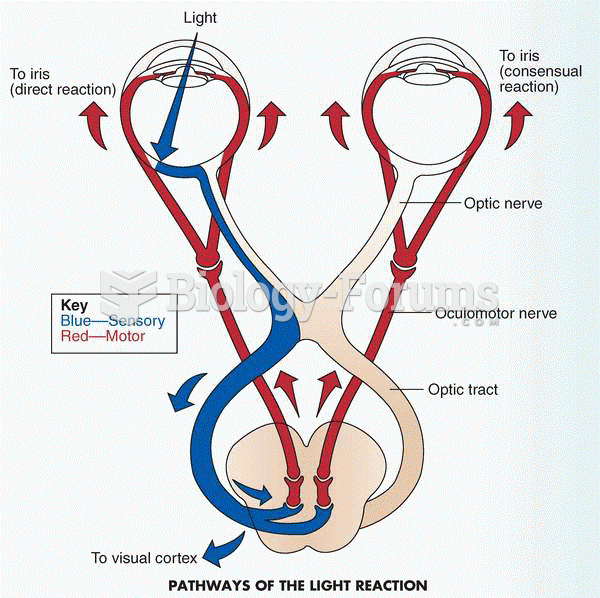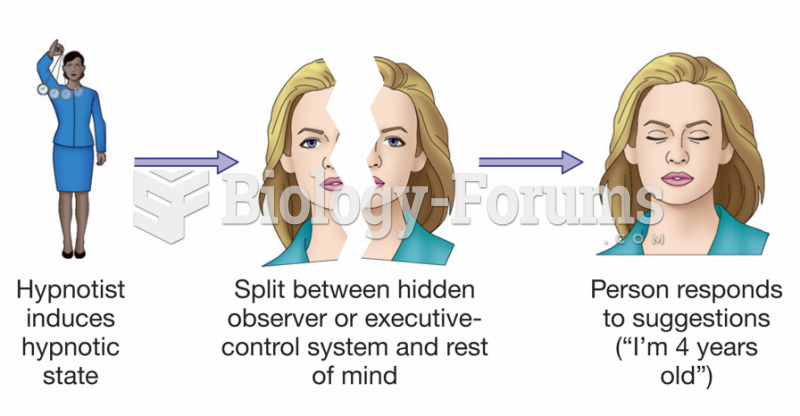|
|
|
Only one in 10 cancer deaths is caused by the primary tumor. The vast majority of cancer mortality is caused by cells breaking away from the main tumor and metastasizing to other parts of the body, such as the brain, bones, or liver.
The oldest recorded age was 122. Madame Jeanne Calment was born in France in 1875 and died in 1997. She was a vegetarian and loved olive oil, port wine, and chocolate.
The familiar sounds of your heart are made by the heart's valves as they open and close.
Oliver Wendell Holmes is credited with introducing the words "anesthesia" and "anesthetic" into the English language in 1846.
Giardia is one of the most common intestinal parasites worldwide, and infects up to 20% of the world population, mostly in poorer countries with inadequate sanitation. Infections are most common in children, though chronic Giardia is more common in adults.
 A woman in a net on a Congo shore. Although the importation of slaves was illegal after 1807, histor
A woman in a net on a Congo shore. Although the importation of slaves was illegal after 1807, histor
 William Masters and Virginia Johnson are among the most influential researchers in the history of th
William Masters and Virginia Johnson are among the most influential researchers in the history of th





